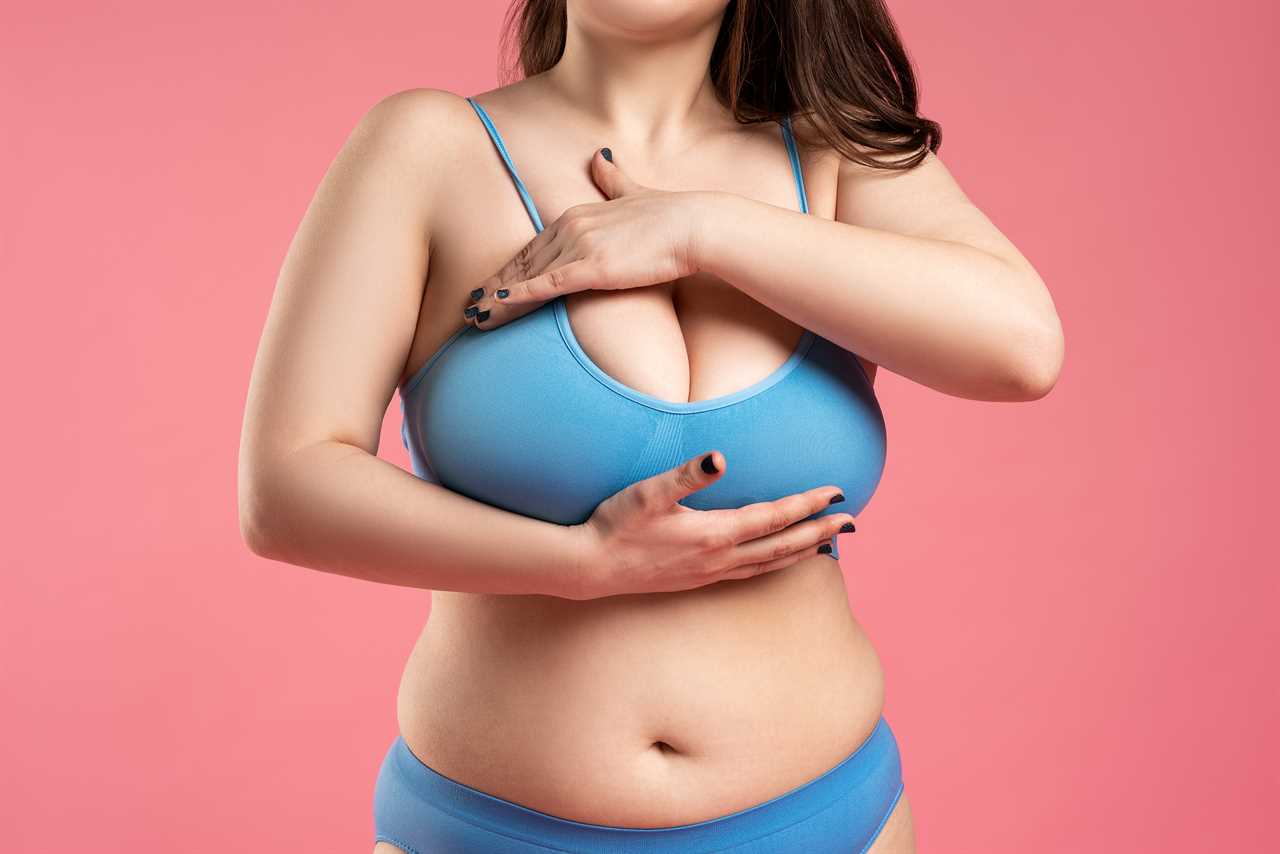IT’S one of the most common types of cancer in the UK – with close to 56,000 cases each year.
In order to prevent breast cancer, we’re taught to check our boobs for any changes, including lumps.

Checking your breasts is any easy way to spot the signs of breast cancer – here’s what you should be looking out for
Around one in seven women in the UK will be diagnosed with breast cancer in their lifetime, with this figure being one in eight in the US.
But it can be hard to know what a lump really feels like if it’s cancerous.
Checking ourselves is imperative, as the earlier the illness is detected, the faster it can be treated and the better chance you have of survival.
Many people can feel lost when doing their regular checks and might dismiss a lump if it’s not painful, however one doctor said this might not be the case.
Dr Arif Kamal, a chief patient officer at the American Cancer Society said in most cases, a lump often feels like a round, hard area.
The expert said that this can either be deep in the tissue, or toward the skin itself.
“Typically it is not painful. It’s typically not easily movable but oftentimes fixed in a particular space, meaning it doesn’t shift in its location all that easily.
“In terms of shape, it is oftentimes round but sometimes it can be a little bit more irregular than that,” he told the HuffingtonPost.
When it comes to past experience, Dr Kamal said that many people have said their lump has felt like a pea in a pod, or even a frozen pea.
Most of the time, he said these lumps have been on the smaller side, but have the same texture as the vegetable.
“It’s generally on the smoother side for texture, generally more firm, generally not painful. And it generally does not feel like a cyst, which feels like a fluid collection – although even if a person feels a fluid collection, they should report that to their clinical team as well,” he added.
Another expert, an assistant professor of radiology at the Ohio State University Wexner Medical Center, Dr Alyssa Cubbison, added that these lumps can be difficult to move from side to side.
When checking your breasts, Dr Cubbison said you mainly want to feel around for something that is discrete.
The lump, she said, will often be separate from the rest of your breast tissue.
Because the textures and densities of masses can be varied, you should be be feeling for anything different.
Even though she said this is vague, Dr Cubbison added that you can always compare one breast to the other, so you can visibly see any changes.
However, it’s important to note that a lump isn’t the only sign of cancer, and there are other things you should be looking out for.
The NHS says you should also look out for a change in the size or shape of one or both breasts.
Discharge from your nipples, which is streaked with blood is also another sign, as is a swelling in your armpits.
Dimpling on the skin of your breast and a rash around or on your nipple is also a red flag.
If you check your breasts on a regular basis, these signs should be easy to spot.
But if in doubt, always speak to your GP and in an emergency, always call 999.






